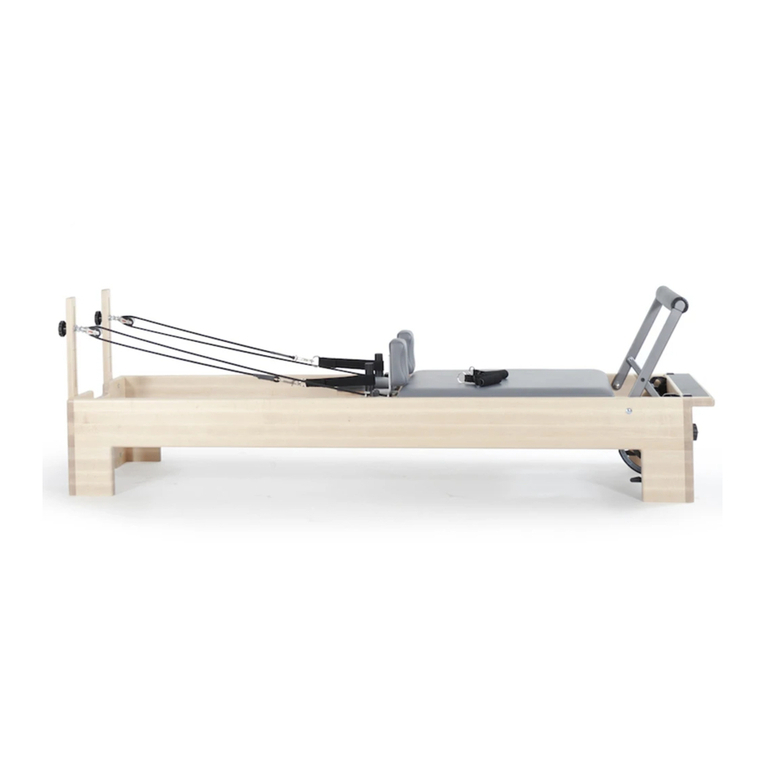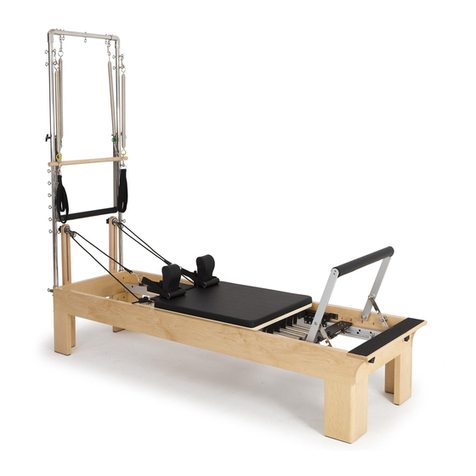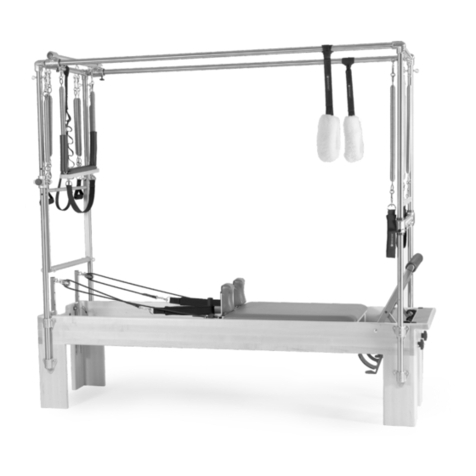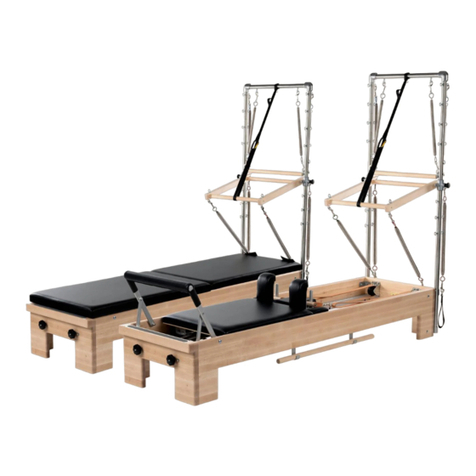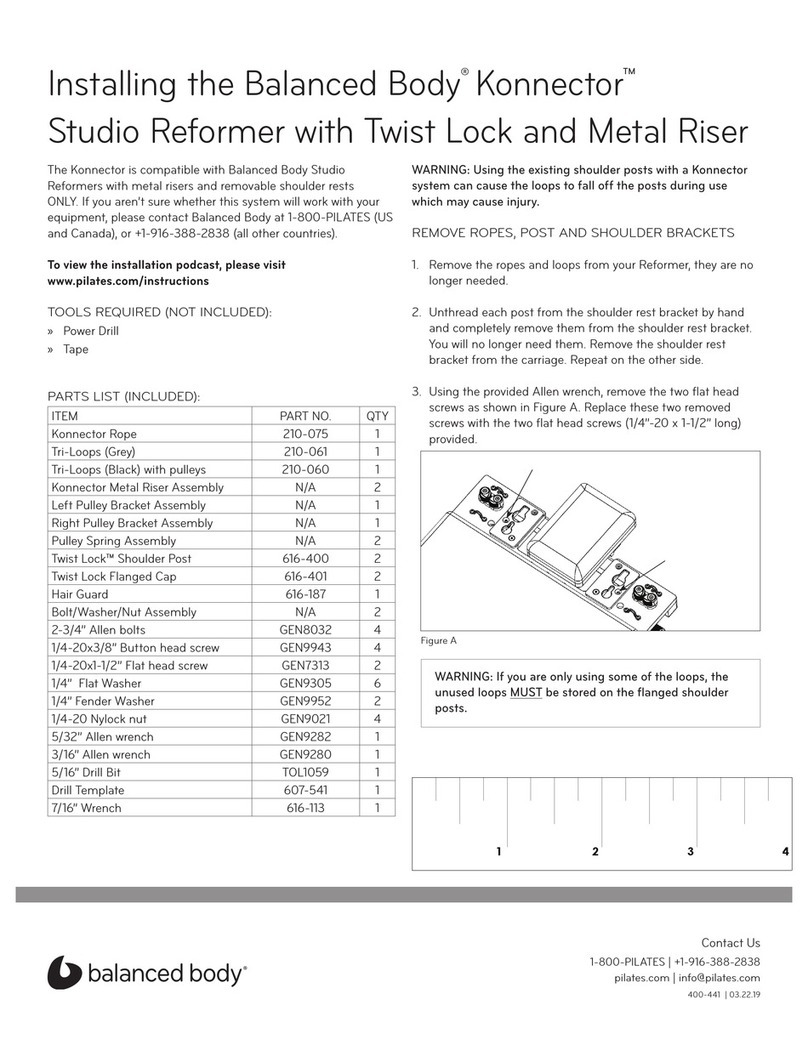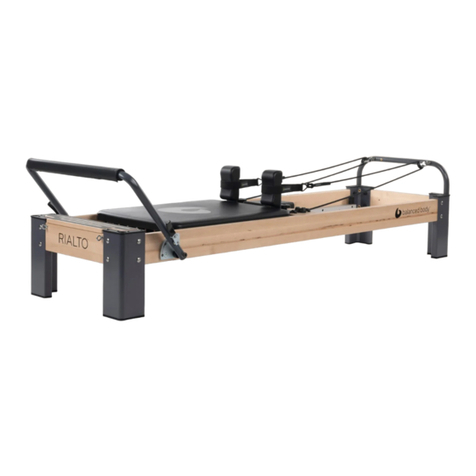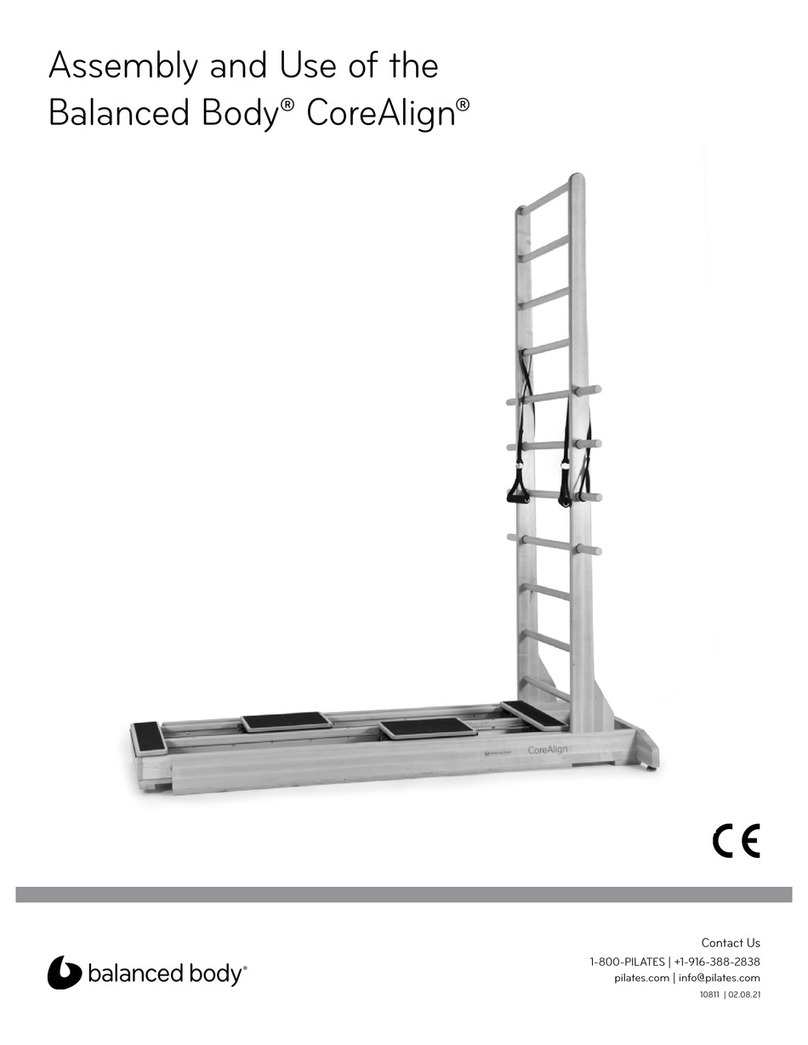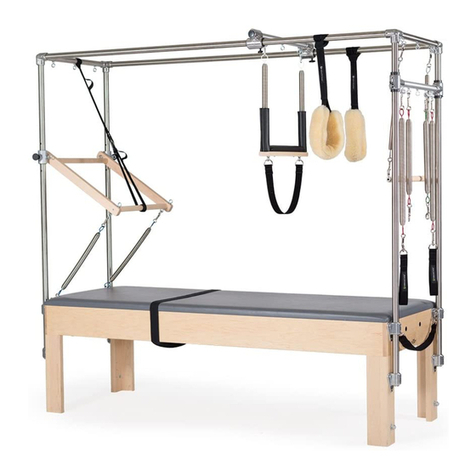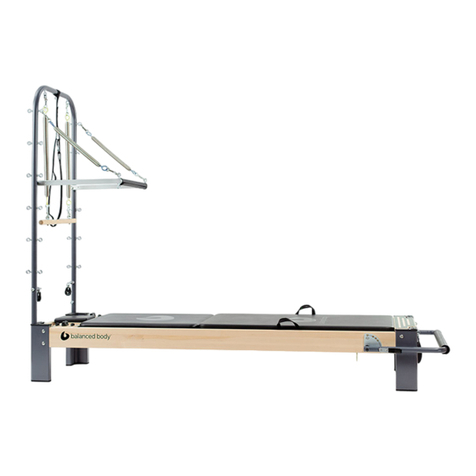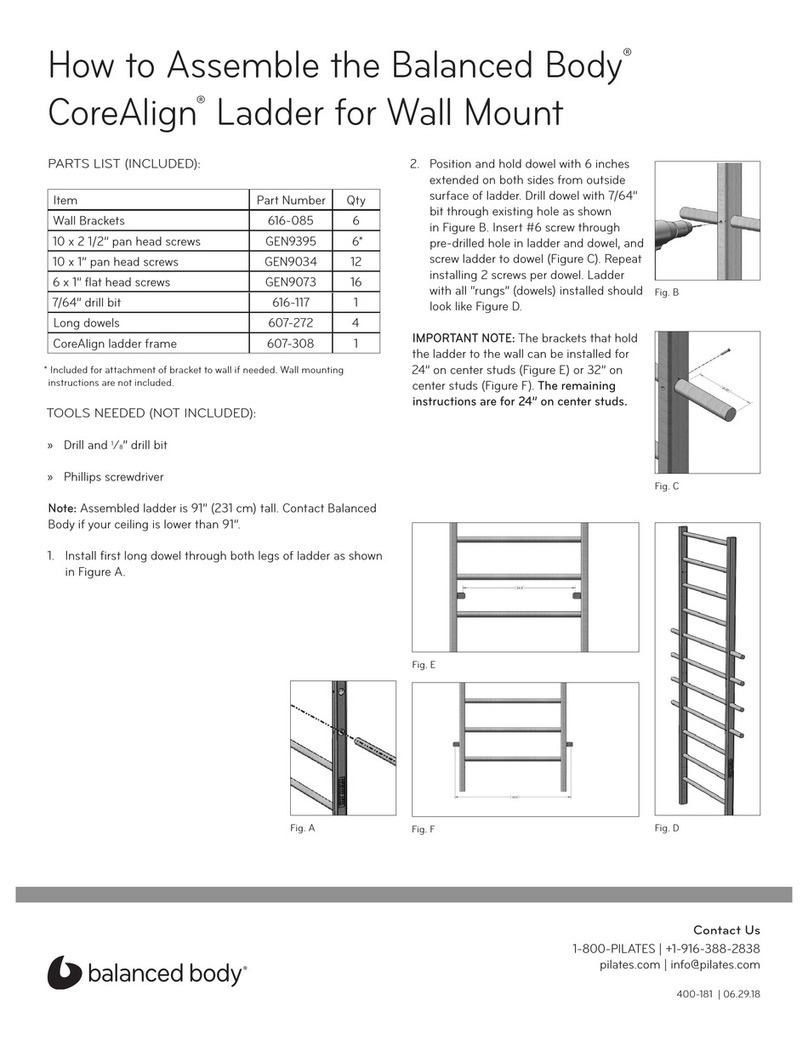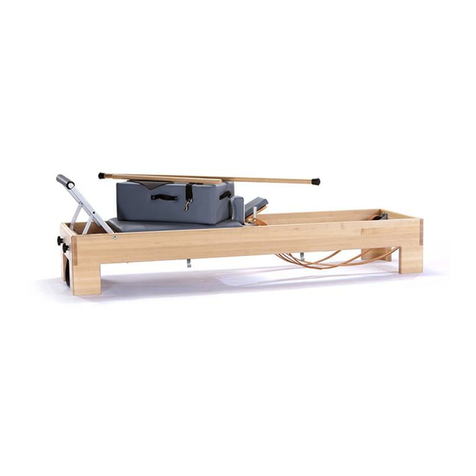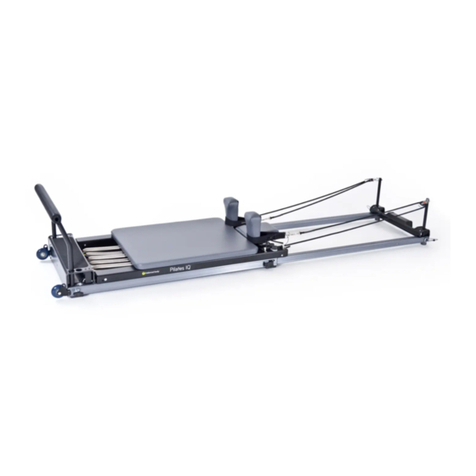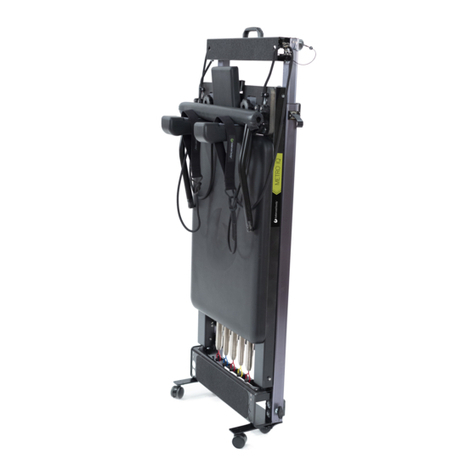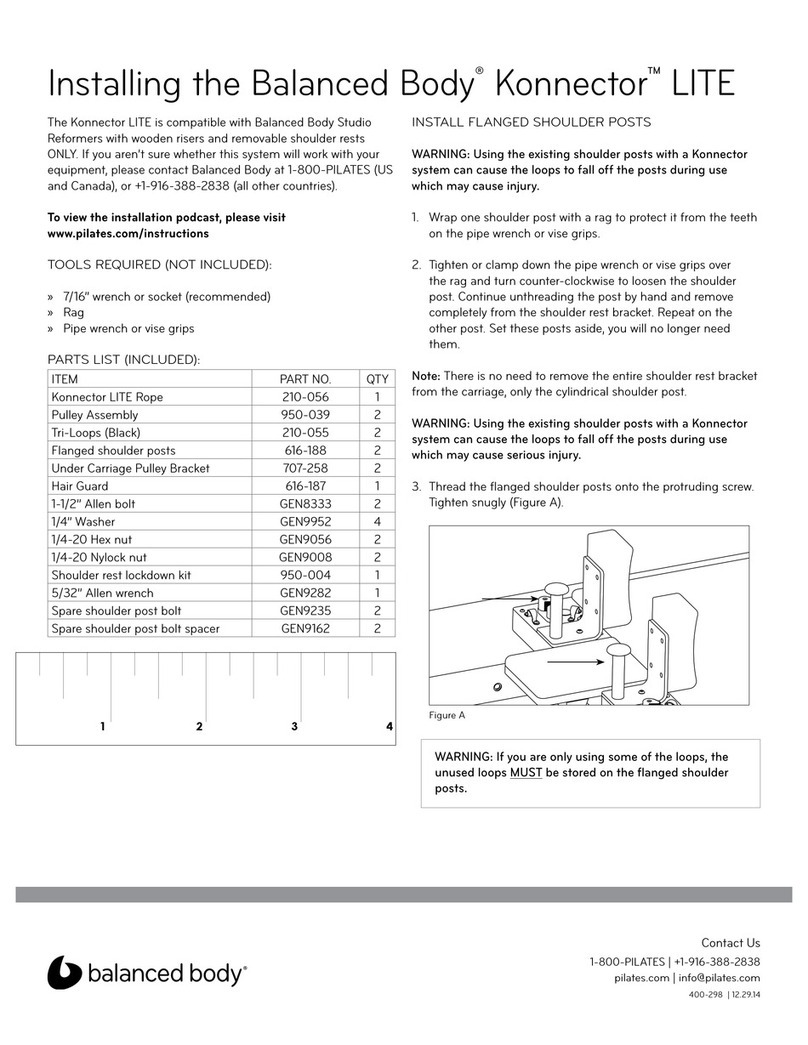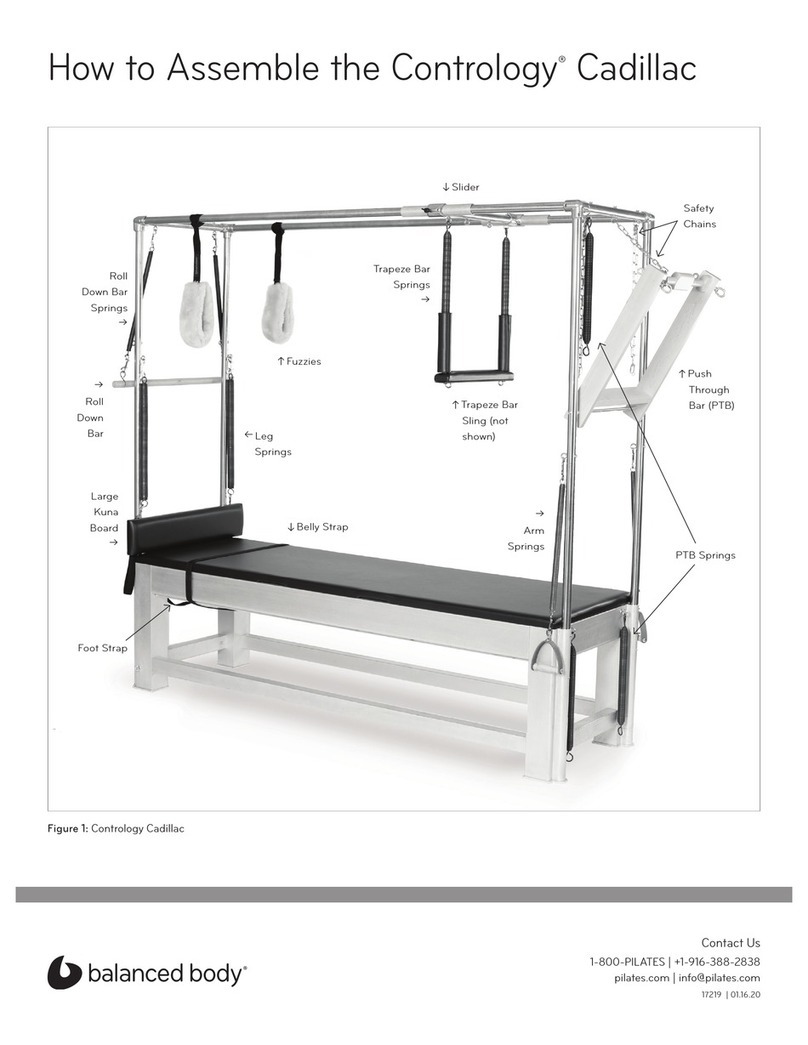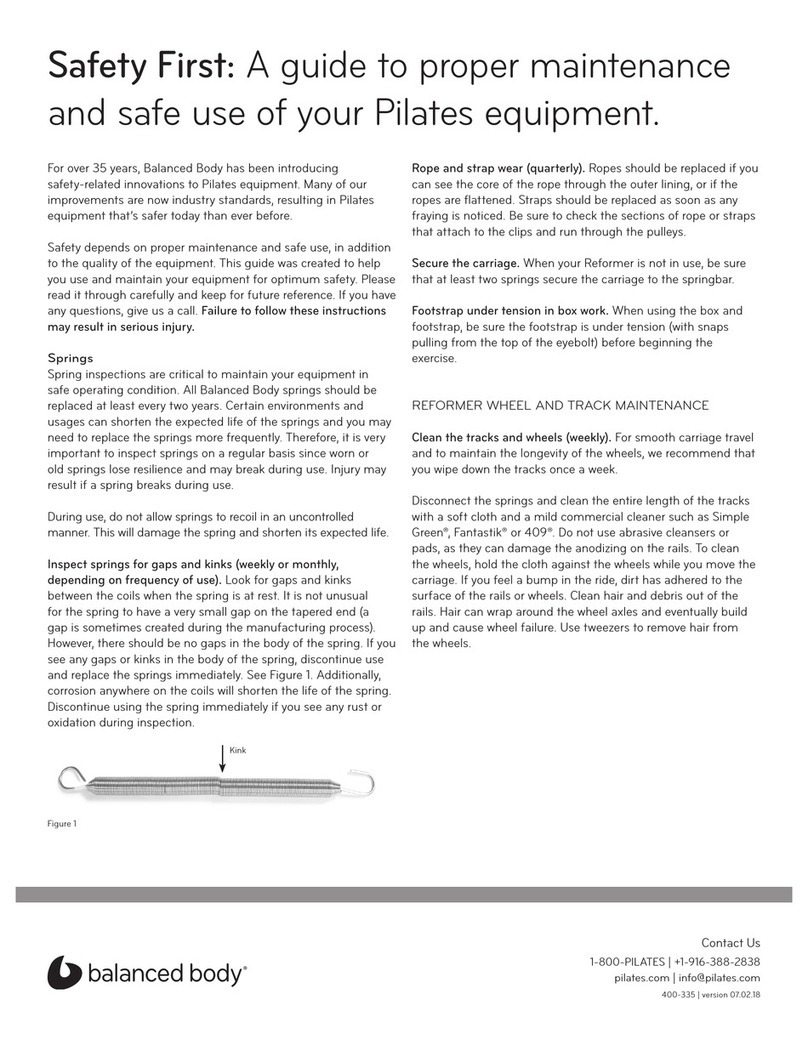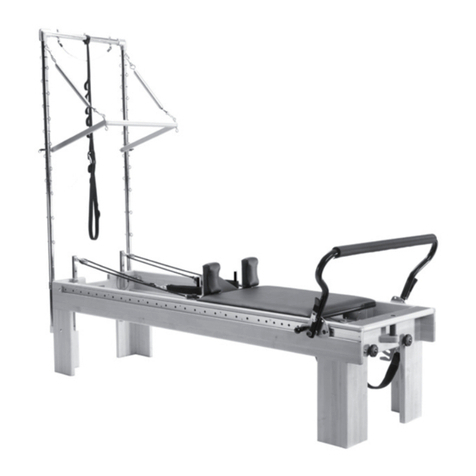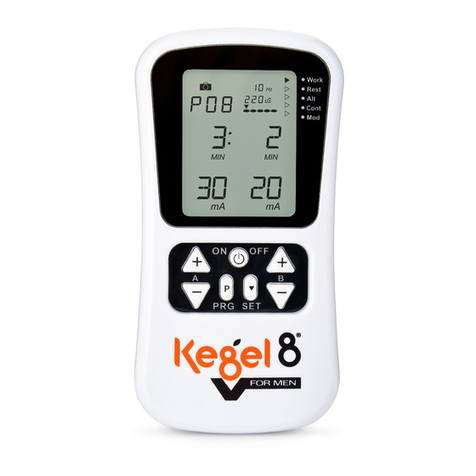
Feet in Straps
Springs: RB to 2R
Footbar: Low or High (to get into the straps)
Straps: Adjust the ropes so the loops are under a slight amount
of tension with the legs straight and the hips flexed to 90
degrees.
Pulleys: High position to increase challenge on posterior hip.
Middle or low position to target pelvic stability.
STARTING POSITION
Lie supine on the carriage with the head on the headrest and the
straps on the arches of the feet. To place the straps on the feet,
hold the straps in the hands, place one foot on the footbar and
place the other foot in one footstrap. Press into the footstrap and
hold the rope to stabilize the leg as you place the other foot in
the second footstrap. Flex the hips and raise the legs as close to
90 degrees as possible while keeping the pelvis neutral.
MOVEMENT SEQUENCE
Exhale – Engage the abdominals to stabilize the back and
start the exercise. Maintain the position of the back and pelvis
throughout the movement.
Inhale – Return the legs to the starting position.
POSITIONS
Leg lowers: With the pelvis stable and the inner thighs together,
lower and raise the legs.
Scissors: With the pelvis stable and the inner thighs together,
open the legs out to the sides and return.
Variations – Keep the legs at 90 degrees and don’t move the
carriage or move the legs from the split position towards the
footbar allowing the carriage to move.
Circles: With the pelvis stable and the inner thighs together,
move the legs down, open the legs out to the sides and circle
them around to the starting position. Do 6 to 10 in each
direction.
Knee circles - Place the straps around the knees to warm up the
hips and decrease the challenge.
CUEING AND IMAGERY
»Engage abdominals before the legs lower and keep them
engaged.
»Lower legs only as far as back can stay stable throughout
exercise.
»Move the legs symmetrically.
»Don’t hyperextend the knees.
PURPOSE
»Strengthen abdominals.
»Strengthen the hamstrings, adductors, deep hip external
rotators, gluteus maximus, hip abductors.
»Increase flexibility of the hamstrings, adductors and hip
flexors.
»Increase pelvic stability.
»Develop balance in the hip musculature.
PRECAUTIONS
For low back and sacroiliac joint problems – Make sure the low
back is not changing position as the legs move. Support the low
back in a neutral position with a towel. Limit the range of motion
as the legs lower. Avoid if symptoms increase.
For hip flexor injuries and hip arthritis – Work only in a range of
motion that does not increase symptoms. Work with the knees
rather than the feet in the straps to decrease the load on the hips
or avoid if symptoms increase.
For limited hamstring flexibility – In order to avoid stress on the
low back, hamstring flexibility needs to be great enough to allow
the back to stay stable as the legs move to approximately 65
degrees of hip flexion. If the student doesn’t have this
range it is preferable to do these exercises on the Cadillac or
Trapeze Table
6




















